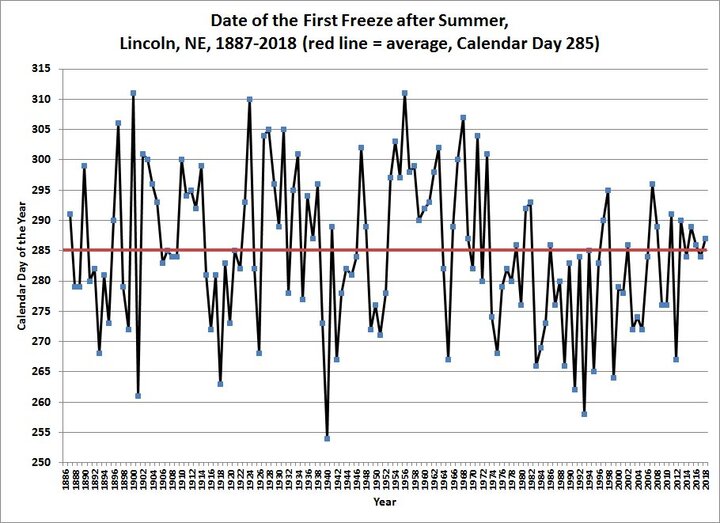
When a heavy, wet snow fell last Sunday, the state's corn harvest was just 25% done and soybean harvest, just 38%, according to Monday's USDA NASS Crop Report.
On Sunday parts of south central Nebraska had as much as 7 inches of snow and the Lincoln area had 3-5 inches. Growers in Saline County said they couldn't remember unharvested soybeans with this much snow, said Extension Educator Randy Pryor.
While it seems early for this much snow, really how unusual is an Oct. 14 snow?
That was the question University of Nebraska-Lincoln Applied Climatologist Ken Dewey looked at for Lincoln. While Nebraskans know how quickly the weather can change from one day to the next, Dewey's graphs show just how much it varies from year to year. The average date for the first measurable snowfall in Lincoln, based on data from 1948-2018, is Day 322. In 2018 Day 322 falls on Nov. 18, more than a month after the first measurable snowfall. (See a chart of Day Numbers for 2018.)
The other charts, all for Lincoln, show the dates of the first freeze after summer 1887-2018, the date of the last measurable snowfall after winter (1948-2018), and the date of the last freeze after winter (1887-2018).
Dewey first published these charts on Twitter at @kdewey1unl.




